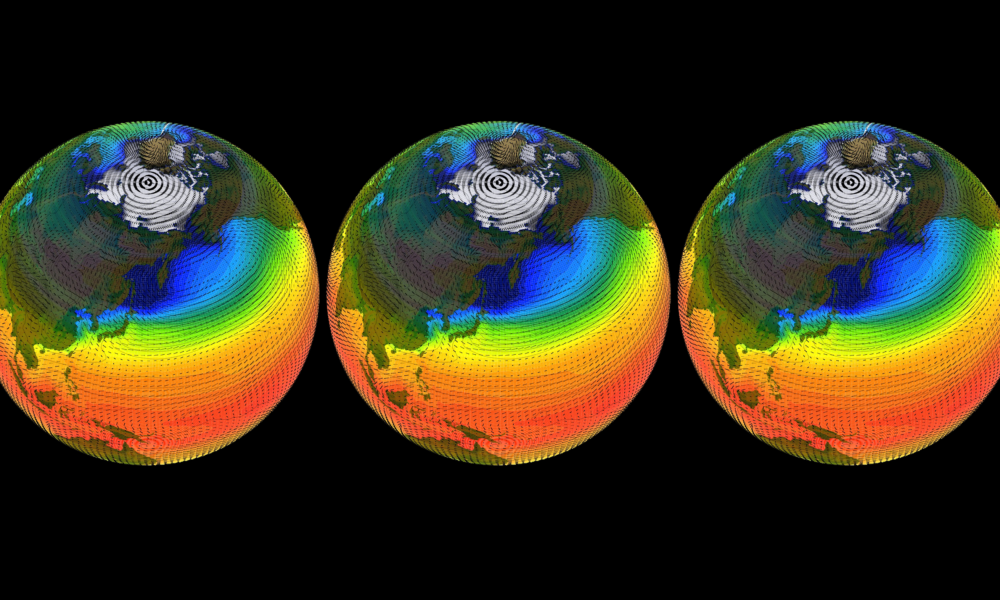Estimating global climate change with any degree of accuracy is no easy feat. Although climate models all agree that global temperatures are increasing, the rate and extent to which predictions differ leaves us with uncertainty. For example, it is unclear when the Earth will surpass key temperature thresholds, such as the 1.5 degrees Celsius limit set out by the Paris Agreement, past which a slew of negative climate impacts will become inevitable.
A group of scientists at McGill found a new way to project climate change more accurately using new mathematical equations that incorporate the Earth’s energy balance. These results were recently published in the journal Earth System Dynamics in a study led by former graduate student Roman Procyk and professor Shaun Lovejoy from the Department of Physics.
“It is common in geophysics to start with a mathematical result or model and then try to find an application,” Lovejoy said in an interview with the McGill Tribune. “I proceeded in the opposite manner.”
Early in his career, Lovejoy focussed on discovering scaling relationships between large and small structures, such as weather systems and clouds. This symmetry principle can be seen in objects such as “fractals,” which have patterns that, when zoomed in, repeat exactly the same pattern ad infinitum. For example, a tree has branches that also have smaller branches, and those branches have even smaller branches, all of which resemble trees at different scales. Understanding these scaling relationships in the atmosphere helped Lovejoy discover the macroweather regime—an intermediate period that is distinct from short-term weather, or atmospheric conditions in periods of less than 10 days, and long-term climate, or atmospheric conditions over decades.
While other models projected climate by simulating weather in the long term, Lovejoy and his group projected their climate model based on this macroweather regime. To simulate weather, researchers must take many details into account, such as the shapes of clouds, altogether resulting in a huge computational burden. But by making the model directly in the macroweather regime, these details become irrelevant because variations in these details will average out over a long period of time.
Additionally, this new model incorporates equations for the Earth’s energy balance—an energy exchange between the solar energy input from the sun and thermal energy output to outer space. However, because of greenhouse gases which trap heat due to their molecular structures, there is less energy leaving than coming in, disrupting this balance and contributing to global warming. The key aspect of this new model is that it takes into account this extra energy stored on Earth by applying principles of scaling. Adding in the collective behaviour of other atmospheric structures such as clouds and weather, Lovejoy and his group were able to project climate temperatures to 2100.
“Our projections overlap a huge amount with the IPCC projections,” Lovejoy said, referring to the projections used by the Intergovernmental Panel on Climate Change. “They fundamentally agree with each other, but our uncertainty range is quite smaller.”
This means that there is a narrower timeframe for reaching the 1.5 C limit. To date, human activity has caused global warming to reach 1 C above pre-industrial times. Many people have witnessed and suffered the effects of climate change in the last few years, with wildfires in California and severe floods in Europe. Lower-income countries have experienced food insecurity, increased poverty, and climate migration as a result of these extreme weather changes. Exceeding the 1.5 C threshold would mean that heatwaves, storms, and floods will become more and more frequent.
Climate projections have important implications for individuals’ everyday decision making, from planning what crops to grow to choosing where to live. At the infrastructure level, climate predictions guide mitigation policies, such as for managing floods or building seawalls. With the smaller uncertainty range projected by this new model, Lovejoy says that this means less “wiggle room” for politicians when it comes to reaching their targets—policies will have to be more stringent about reaching their goals.
With these promising results, his group hopes to extend this model to make regional climate projections. But first, they aim to further understand and improve the model by trying techniques such as testing its accuracy against satellite data.
“This [model] is the beginning of something that will be going on for a long time,” Lovejoy said. “It’s going to be really interesting times.”








